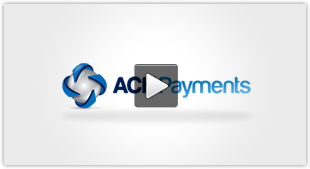Automated Clearing House Integration Solutions (ACH Integration Solutions) streamline the process of electronic funds transfers, facilitating efficient and secure payments between bank accounts. These solutions serve as vital infrastructure for businesses to manage cash flow, automate billing processes, and reduce the hassle of manual financial operations. By integrating ACH payment processing into their systems, companies can benefit from reduced processing fees, increased reliability, and improved reconciliation capabilities as opposed to traditional paper-based methods.

The adoption of ACH integration offers businesses a competitive edge in an increasingly digital economy. Financial transactions conducted through ACH networks are not only cost-effective but also feature stringent security measures, making them a preferred method for handling bulk payments such as payroll, supplier payments, and vendor settlements. Moreover, the automation of recurring transactions ensures timely payments and enhances customer satisfaction, making it a core component of effective financial management strategies for businesses of all sizes.
With the rise of fintech and the increased demand for seamless financial operations, ACH Integration Solutions have become more accessible and user-friendly. Providers of these solutions offer varying levels of customization, including the ability to schedule payments, create detailed reports, and integrate with existing accounting software. This flexibility allows businesses to tailor the ACH payment process to their specific needs, optimizing their overall financial workflows and ensuring compliance with regulatory standards.
ACH Integration Fundamentals

Implementing ACH integration represents a strategic decision for organizations looking to streamline their payment operations. This section will detail the foundational concepts necessary for understanding how ACH functions and the criteria to consider when selecting an integration solution.
Understanding ACH and Its Benefits
Automated Clearing House (ACH) is an electronic network used in the United States for financial transactions. ACH payments are a way to transfer funds between bank accounts without using paper checks, credit card networks, wire transfers, or cash. Notably, ACH supports both debits and credits, making it versatile for various transaction types such as direct deposits, bills, and recurring payments.
Main ACH benefits include:
- Lower processing fees compared to other payment methods, reducing processing costs.
- Added flexibility in managing recurring payment models.
- Enhanced security as sensitive data is tokenized and direct exposure to banking details is minimized, aligning with anti-fraud measures.
- The ability to automate payment collection, improving efficiency.
NACHA (The National Automated Clearing House Association) governs the ACH network, setting rules for ACH payment processing which include same-day ACH capabilities.
Choosing an ACH Integration Solution
Selecting the right ACH Integration Solution or ACH API depends on specific business requirements including processing speed, reporting functionalities, support services, and integration with existing payment solutions.
Here are key factors to consider in a potential ACH integration service:
- API Functionality: A robust API should offer features like automated payment collection, handling of NSF returns, and re-presentment originations.
- API Availability: Reliable uptime with agile payments processing to support SaaS organization operations.
- Security: Protection of sensitive data via measures such as tokenization of API credentials.
- Processing Fees: The ACH processing fees should be transparent and competitive.
- Support: Quality customer and technical support to resolve issues rapidly.
- Payment Facilitation: Capability to handle both ACH debits and ACH credits, including preferred settlement and origination services.
- Flexibility: Tailored risk acceptance models and options to set retry field parameters.
- Track Record: A potential partner with a strong track record in ACH transaction integration.
An effective ACH integration API will often be developed with the capacity to cater to both US ACH and Canadian EFT systems, enabling North American scope with thorough risk acceptance models in place. Furthermore, the capacity for same-day ACH, lower transaction fees, and ACH payment processing return rates are vital metrics for maximizing efficiency and cost effectiveness.
Advanced ACH Integration Strategies

Integrating advanced Automated Clearing House (ACH) payment solutions can significantly improve the efficiency and security of financial transactions for businesses. These strategies focus on optimizing costs and ensuring strict compliance with security protocols.
Optimizing for Cost Efficiency
ACH integration can offer considerable savings compared to traditional payment methods like credit card processing and paper checks. By leveraging SaaS solutions that cater to ACH payment processing, businesses can reduce transaction fees associated with credit card transactions and minimize expenses related to credit card decline rates.
- Fees: Transaction fees for ACH are typically less expensive than those for credit cards or wire transfers.
- Billing Models: Subscription-based models enable a “set it and forget it” billing process, allowing for simplified recurring payments.
- Efficiency: Direct deposits and payments through the ACH network make disbursement and reconciliation more efficient than handling NSF funds and the resultant NSF fee transactions.
Ensuring efficient ACH integration involves:
- Selecting a payment facilitator that supports RESTful or SOAP interfaces for seamless integration.
- Leveraging batch processing to aggregate transactions, reducing costs.
- Implementing risk acceptance models to minimize non-sufficient funds (NSF) incidents.
Security and Compliance
Security in ACH transactions is paramount as it involves sensitive financial data. Compliance with PCI security standards is required when handling customers’ checking and savings accounts information.
- KYC and Underwriting: Rigorous Know Your Customer (KYC) procedures and thorough underwriting processes are crucial for risk mitigation.
- Encryption and Data Protection: Utilize encryption methods and secure data practices to protect against data theft.
- Monitoring: Regularly monitor transactions for any unauthorized access or potential fraud.
ACH network security and compliance measures include:
- Implementing PCI security standards to safeguard payment information.
- Authenticated users and transactions are authorized, reducing the chance of disputed payments.
- Creating risk mitigation practices to deal with credit card declines and non-sufficient funds scenarios.
- Integrating advanced fraud detection systems to prevent unauthorized ACH transactions.








